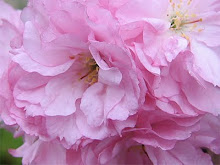
Here is a broad list of foods derived from Herman Aihara's book, Acid and Alkaline (see pages 88 through 93) that divides food into four groups according to their yin and yang, and acid- and alkaline-forming properties.
To balance my meals, I choose foods from each of the four categories, making sure that I'm balancing the amounts with the opposite category (that is, Yin Acid-forming opposite Yang Alkaline-forming and Yang Acid-forming opposite Yin Alkaline-forming).
For example, I might choose a whole grain (yang acid-forming), a vegetable (yin alkaline-forming), a small amount of oil (yin acid-forming), and a small amount of unrefined sea salt (yang alkaline-forming). I might also make a small bowl of soup containing barley miso (beans, grain, salt) and wakame (alkaline-forming sea-vegetable that's also yang), and a cup of bancha tea (yin alkaline-forming).
Chewing my food at least 100-200 times per mouthful makes the acid-forming grain more alkaline because it mixes with ptyalin enzymes in my saliva.
YANG ACID-FORMING FOODS
Grains, whole (except for millet, which is alkaline-forming)
Animal foods (sea and land animals, salted cheese)
YIN ALKALINE-FORMING FOODS
Fruit juice, herb tea, bancha tea,
Coffee (organic, with caffeine — decaf is acid-forming)
Honey, spices, fruits, seeds,
Vegetables (with a few yang exceptions)
Seaweeds (with a few yang exceptions)
YANG ALKALINE-FORMING FOODS
Millet
Wakame and Kombu seaweeds
Lotus, Burdock, and Dandelion root vegetables
Jinenjo Japanese potato
Soy sauce (natural)
Gomashio (sesame salt)
Miso
Salted umeboshi plum
Salt (unrefined sea salt with its alkalyzing minerals intact)
Kuzu, Dandelion, and Mu teas
Yannoh (Ohsawa grain coffee)
Ginseng
YIN ACID-FORMING FOODS
Chemical drugs, pills, sugar,
candy, soft drinks, alcohol,
vinegar, beans, nuts, oils,
flour, noodles
Note: Technically, quinoa, amaranth, and buckwheat are not cereals/grains since they're not from the grass family. They do not necessarily fall into the Yang Acid-forming group. Quinoa and amaranth are neutral-to-alkaline forming, whereas buckwheat is neutral-to-acid forming. (Quinoa is in the goosefoot family, amaranth is in the spinach family, and buckwheat is in the rhubarb family.)
These three books cover the four basic food groups in great detail and are available on the George Ohsawa Macrobiotic Foundation website:
1) Acid and Alkaline, by Herman Aihara
2) Acid Alkaline Companion, by Carl Ferre
3) Essential Guide To Macrobiotics (formerly, Pocket Guide To Macrobiotics), by Carl Ferre.
Related Blog Articles:
The Yin and Yang of Acid and Alkaline
The Benefits of Unrefined Sea Salt
The Importance of Chewing
Whole Grains For Centering






















































